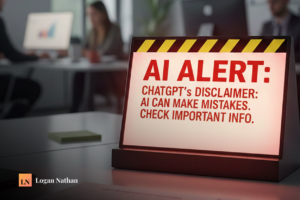
What if I told you that in the next few years, the now-ubiquitous smartphone will give way to its smarter cousins that will manage everything — from monitoring your health and sleep patterns to manipulating the window blinds to controlling the temperature in your office? Or that motion sensors will automatically schedule meetings for you or perhaps suggest a nice restaurant nearby sensing your hunger?
These ideas are not only within reach, but with each passing day, they are speedily progressing into reality. Riding these trends in Australia are companies like GoFar — mobile app and in-car display that helps to drive your vehicle up to 15% more fuel efficiently — and Wattcost — a mobile-to-mobile technology that generates real-time updates to enable appliance usage in a way that maximises energy savings.
Frankly, it wouldn’t be a stretch to say that the future of how we’ll live and work is pegged on three words — Internet of Things!
According to a Microsoft-funded report from last year, IoT adoption has been off to a slow start among Australian businesses, yet two-thirds of those who have deployed IoT solutions have reported day-to-day operational cost savings of nearly 28%.
The point is, IoT is no longer a hype on the horizon. It’s here and now! But the question is: how can your SMB join the ranks of those benefitting from embracing IoT?
Talking in acronyms, like I always do, let’s discuss six key elements that SMBs need in order to take advantage of new opportunities afforded by IoT.

TECHNOLOGY is a moving target
It’s highly difficult to keep pace with the rapid technology shifts, let alone staying ahead of them, which is why it’s even more important to think of working with tech as a continual learning process.
Like it or not, it’s a “transform or get disrupted” situation for SMBs in the face of ever-expanding digital wave. It’s getting difficult, as we speak, and even virtually impossible to remain relevant in the coming years without a winning technology strategy in place. Tech-forward SMBs experience greater productivity and are better-equipped to compete with larger players. By contrast, low-tech SMBs that aren’t planning and investing in the right technologies are simply setting themselves up for failure in the long run. Are you one of them? Then think again!
While many view tech investments as prerogatives of big brands and large enterprises, it’s often considered a luxury small businesses can’t afford. This isn’t true. At least, no longer.
Hybrid devices like Microsoft Surface and cloud-based platforms are cost-effectively pushing the latest tools and technologies through the front doors of small businesses, enabling them to compete with bigger players. As waves of IoT come crashing, the success of SMBs will depend on how fast they can adopt new cloud-based technologies.

RELATIONSHIP with customers is witnessing a sea-change
With the balance of power shifting to consumers, their expectations have undergone seismic shifts too. They are no longer interested in in-your-face advertisements and sales campaigns. Rather, consumers want brands to form value-based relationship with them before giving away their trust, loyalty, and money.
Last month, I published an article on the importance of implementing a customer experience management culture for SMBs. As I mentioned in this article — Customer Experience Management (or CXM) is the new Customer Relationship Management!
For SMBs to win at CXM, they need to have a deeper understanding of IoT trends that are impacting the way they will interact with their customers moving forward.
With IoT, the potential for connectivity is huge. Businesses leveraging this potential will be able to connect with customers in a way that can make them more relevant. One area where IoT’s power can be felt strongly is customer service and interactions. For instance, an IoT-based device can itself communicate an issue to support and servicing teams, who can detect and fix anomalies in the appliance or system probably even before the customer is aware of it. This is exactly the type of instant, anywhere-anytime service that today’s consumers have come to expect.
As consumers are increasingly flitting between devices and a single transaction often initiate on a mobile phone and end on a laptop, it’s becoming crucial for brands to ensure seamlessness throughout the process. IoT with its unmatched level of connectivity, allows businesses to engage their customers across various platforms and devices in a seamless and non-intrusive manner. CXM helps to achieve this by eliminating internal barriers ensuring that employees, processes and digital technology platforms can work in tandem to deliver a holistic customer experience across all touchpoints.
To this effect, my team at solomoIT is currently developing a hybrid CXM platform for Trades Services, the early stages of which will go as beta in the coming months and you can learn more about it here. Our mission is to enable the Australian Trades services companies to use our newly developed hybrid technology software platform as a means to bridge the gap with their customers, and in the process, become more customer-centric.
IoT-based campaigns also play a major role in driving two-way interactions with customers. For instance, businesses can encourage one-on-one conversations with their customers and reward them for their time, money, effort, and engagement by providing incentives — be it monetary, promotional, or content (more on this in the next point).

ENGAGEMENT is the key to better relationships
If you ask me, IoT is driving the next wave of brand engagement. And why not? Think of how emerging digital technologies such as virtual reality, RFID and NFC tags, QR codes, image recognition, and beacons are engaging customers, transforming their experiences both in stores and at home.
IoT-powered hyperlocal data enables retailers to more precisely understand, segment and target their customers with personalised, contextual advertising, loyalty programs, special offers and promotions. This allows them to engage with customers at the most relevant time and with incentives that may compel them to interact.
A case in point is how Taco Bell has been targeting consumers based on their location by advertising and messaging them on mobile platforms like Pandora, Waze (a Google-owned community-based traffic and navigation app), and weather apps. At one instance, they were sending targeted messages to consumers driving by their local Taco Bell, offering them free cinnamon twists with every late night purchase. In 2014, the fast food giant had used a similar location-based strategy to target drivers on their way to watch college football games. Clearly, Taco Bell has been doing something right in the way of data collection and analysis. Goes without saying, their ability to target the right set of customers is the secret behind successful engagement campaigns.

NETWORK with the target market
Gartner has famously predicted that there will be 25 billion connected devices in use worldwide by 2020. In Australia alone, more than 1.5 million machine-to-machine (M2M) devices have been deployed already, and this figure is expected to surge to over three million by 2017.
A recent PwC report states that in 2016, more than half of Australians use a wearable device. However, a majority (80%) of survey respondents (especially Millennials) need incentives such as money or loyalty points to feel encouraged enough to use these devices on a daily basis. Do I sense a gap here that can be filled? Oh yes, I do!
Businesses can leverage IoT and wearable devices as a platform to stay on their customers’ radar , to delight them with new offers, to upsell or cross-sell — and in the process, build solid, long-term relationships.

DESIGN is all about user experience
As product design and UX research/strategy consultant for IoT, Claire Rowland puts it: “Good UX goes deeper than UI design. UI design is irrelevant unless the product has a value proposition that users can understand, and want. Connectivity has to add clear, comprehensible value to a product in the eyes of the customer.
Finally, good UX requires closer collaboration between designers and engineers inline with end user customers’ reallife road. You can’t make the right UX without the right APIs, and users will expect products to work together: devices interoperating and coordinating with other devices.”
There you have it — design (be it the hardware design or UI design of applications) is simply a piece of the puzzle. You need to focus on user experience to make it a coherent whole.

STRATEGY is essential
Just like everything else in business, strategy is the first step towards adopting IoT. While you may be aware of the operational benefits IoT can offer, without an actionable strategy that aligns your IoT goals with your overall business objectives, you’d be chasing your tail. A good strategy must cover all bases including capacity, flexibility, data analytics and security issues of hardware and software. Moreover, you should be prepared with an infrastructure that’s highly flexible and scalable to handle the huge stacks of data generated by IoT implementation.
Conclusion
From what I’ve seen, small businesses often consider IoT to be something too advanced for their current needs, capabilities, and of course, budget. However, in doing so, they are overlooking the long-term viability of their business as well as benefits — such as increased productivity, faster and more-informed decision making, and new business opportunities etc. — that a strategic IoT adoption can bring.
With the age of hyper-connectedness dawning upon us, it’s only a matter of time when IoT will become a top driver of organisational growth for enterprises and small businesses alike. To make sure your business is ready to ride this “third wave of the Internet”, you have to:
- Make technology an ongoing conversation across all levels of the organisation
- Evolve with the changing dimensions of customer relationship
- Focus on customer engagement as the precursor to long-term relationships
- Explore and utilise new channels to network with your target market
- Avoid treating user experience as an afterthought to design
- Remember, not having a strategy is simply not an option
Stay prepared or risk fading into oblivion — now is the time to make your choice!
Feeling stuck in the digital transformation maze? Feel free to contact us for an in-house session or virtual consulting to help you get un-stuck!



